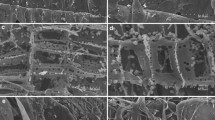Abstract
Dichomitus squalens, a wood-rotting fungus, can utilize recalcitrant biomass for growth; however, the extracellular metabolic processes involved are not well understood. A systematic target analysis of D. squalens has been carried out using optimized conditions for lignocellulolysis. Seven encoded proteins and 58 metabolites that consistently exhibited altered regulation patterns were identified. The predicted regulators were then vertically combined into a comprehensive network that included entire signaling pathways involved in D. squalens. Despite the diversity of these pathways, they showed complementary cooperation among themselves, ensuring the efficiency of active biodegradation and thereby yielding energy saving for the cells. Although several hydrolytic enzymes (e.g., polysaccharide-degrading enzymes, α/β-hydrolase, and peroxidases) were systematically utilized, peroxidative controllers (e.g., glyoxal oxidase and P450-oxidoreductase) were rarely generated.



Similar content being viewed by others
References
Bak JS (2014) Process evaluation of electron beam irradiation-based biodegradation relevant to lignocellulose bioconversion. SpringerPlus 3:487
Bak JS, Ko JK, Han YH, Lee BC, Choi IG, Kim KH (2009) Improved enzymatic hydrolysis yield of rice straw using electron beam irradiation pretreatment. Biores Technol 100:1285–1290
Bak JS, Kim MD, Choi IG, Kim KH (2010) Biological pretreatment of rice straw by fermenting with Dichomitus squalens. New Biotechnol 27:424–434
Bolobova AV, Zhukov AV, Klyosov AA (1994) Lipids and fatty-acids in cellulosomes of Clostridium thermocellum. Appl Microbiol Biotechnol 42:128–133
Cullen D, Kersten PJ (2004) Enzymology and molecular biology of lignin degradtion. Springer, Berlin
Diaz E (2008) Microbial biodegradation: genomics and molecular biology. Caister Academic, Norfolk
Lehtiö J, Sugiyama J, Gustavsson M, Fransson L, Linder M, Teeri TT (2003) The binding specificity and affinity determinants of family 1 and family 3 cellulose binding modules. Proc Nat Acad Sci USA 100:484–489
Mäkelä MR, Sietiö OM, de Vries RP, Timonen S, Hildén K (2014) Oxalate-metabolising genes of the white-rot fungus Dichomitus squalens are differentially induced on wood and at high proton concentration. PLoS ONE 9:1–11
Matsuzaki F, Shimizu M, Wariishi H (2008) Proteomic and metabolomic analyses of the white-rot fungus Phanerochaete chrysosporium exposed to exogenous benzoic acid. J Proteome Res 7:2342–2350
Menon V, Rao M (2012) Trends in bioconversion of lignocellulose: biofuels, platform chemicals and biorefinery concept. Prog Energy Combust Sci 38:522–550
Ongkeko WM, Altuna X, Weisman RA, Wang-Rodriguez J (2005) Expression of protein tyrosine kinases in head and neck squamous cell carcinomas. Am J Clin Pathol 124:71–76
Petrov AN, Meskauskas A, Roshwalb SC, Dinman JD (2008) Yeast ribosomal protein L10 helps coordinate tRNA movement through the large subunit. Nucl Acid Res 36:6187–6198
Phillips AJ, Crowe JD, Ramsdale M (2006) Ras pathway signaling accelerates programmed cell death in the pathogenic fungus Candida albicans. Proc Nat Acad Sci USA 103:726–731
Piana S, Jones F, Gale JD (2007) Aspartic acid as a crystal growth catalyst. Cryst Eng Comm 9:1187–1191
Ponyi T, Szabó L, Nagy T, Orosz L, Simpson PJ, Williamson MP, Gilbert HJ (2000) Trp22, Trp24, and Tyr8 play a pivotal role in the binding of the family 10 cellulose-binding module from Pseudomonas xylanase A to insoluble ligands. Biochemistry 39:985–991
Resch MG, Donohoe BS, Baker JO, Decker SR, Bayer EA, Beckham GT, Himmel ME (2013) Fungal cellulases and complexed cellulosomal enzymes exhibit synergistic mechanisms in cellulose deconstruction. Ener Environ Sci 6:1858–1867
Talapatra S, Wagner JDO, Thompson CB (2002) Elongation factor-1 alpha is a selective regulator of growth factor withdrawal and ER stress-induced apoptosis. Cell Death Differ 9:856–861
Taylor LE 2nd, Henrissat B, Coutinho PM, Ekborg NA, Hutcheson SW, Weiner RM (2006) Complete cellulase system in the marine bacterium Saccharophagus degradans Strain 2-40T. J Bacteriol 176:3849–3861
Timson DJ (2007) Galactose metabolism in Saccharomyses cerevisiae. Dyn Biochem Proce Biotech Mol Biol 1:63–73
Acknowledgments
This work was supported by the Ministry of Education, Science and Technology, Republic of Korea.
Supporting information
Supplementary Table 1 - Identification of the selected intracellular signaling proteins in optimized large-scale D. squalens biosystem
Critical media optimization for peroxidation-based large-scale biodegradation
Preparation of cell extracts for intracellular (or extracellular) activity assay
Cellular targets, relevant to lignocellulose degradation
% Industrial process indexes for efficient biofuel production
Preparation for metabolomic analysis
Identification and quantification of metabolome
Downstream data clustering
Proteome extraction and reference mapping
Protein ID and data processing
Prediction of metabolic cascades from omics data
Reference List
Author information
Authors and Affiliations
Corresponding author
Electronic supplementary material
Below is the link to the electronic supplementary material.
Rights and permissions
About this article
Cite this article
Bak, J.S. Extracellular breakdown of lignocellulosic biomass by Dichomitus squalens: peroxidation-based platform and homeostatic regulation. Biotechnol Lett 37, 349–358 (2015). https://doi.org/10.1007/s10529-014-1676-1
Received:
Accepted:
Published:
Issue Date:
DOI: https://doi.org/10.1007/s10529-014-1676-1




